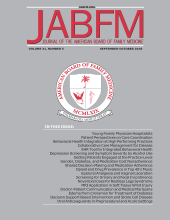To the Editor: We thank Avery et al for their response to our commentary.1 While they state that, “… our conclusions are different,” we find that their points more confirm our points than refute them. We agree with all their positive statements about family physicians delivering babies, especially in rural areas. Our basic statement was that most family physicians do not provide obstetrics (OB) because of 2 primary realities: lack of adequate training and a hostile work environment.
On the training issue, they actually agree with us that for a family physician to competently provide obstetrics, extra training is required. Current options for this extra training includes formal OB fellowships after a standard family medicine residency (their model), extra OB training that is part of a longer family medicine residency duration (eg, John Peter Smith Hospital in Fort Worth, Texas and the Greater Lawrence Family Health Center in Lawrence Massachusetts), and residencies that emphasize obstetrics in their 3-year curricula (eg, various Via Christy Family Medicine Residency programs).
On the work environment issue, they mention their “… experience in the southeast …,” which is fascinating because a recent study found that several southeastern states have remarkably few rural hospitals that have family physicians who provide obstetrics, especially compared with the western United States.2 A recent report of the current state of care for pregnant women in rural Alabama concluded that the number of rural hospitals providing obstetric services has fallen from 45 in 1980 to 16 in 2017, which explains why many of these women have to drive more than an hour to reach a facility to deliver.3 The Executive Director of the Alabama Rural Health Association was quoted as believing that the access issue helps explain why his state has 1 of the country's highest caesarean rates—35.4% of its births in 2015. The author's study of their own OB fellowship graduates (17 over 25 years) show that many areas of rural Alabama have been left uncovered.4
We agree with these authors that family physicians with substantial obstetrics training are the best solution for the health of rural pregnant women and their babies. Training options to achieve this goal currently exist. A supportive work environment does not.
Notes
The above letter was referred to the author of the article in question, who offers the following reply.







